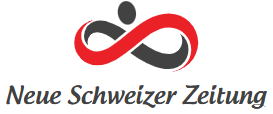
Quantitative Finance vs. Traditional Finance: Key Differences and Advantages
Over the years, two different approaches to finance have emerged, each with its own principles, techniques, and benefits. These approaches are quantitative finance and traditional finance. In this article, we’ll highlight the key differences between these two paradigms and discuss the benefits each paradigm offers.
Understanding Quantitative Finance:
Quantitative finance, often referred to as mathematical finance, is the field of applying mathematical models, statistical methods, and computational algorithms to financial markets. It is a data-driven approach that aims to make informed investment decisions based on quantitative analysis. The main characteristics of quantitative finance are:
Data-driven decision making: Quantitative finance relies heavily on data analysis. This involves collecting and analysing large amounts of historical and real-time data to identify patterns, trends, and correlations in financial markets.
Complex mathematical models: Quantitative analysts, or quants, develop complex mathematical models to evaluate financial products, manage risk, and optimize investment portfolios. These models may include stochastic analysis, differential equations, and advanced statistical techniques.
Algorithmic Trading: Quantitative finance is closely related to algorithmic trading, where computer algorithms automatically execute trading strategies based on predefined rules and mathematical models. This enables faster execution and reduces human intervention.
Risk Management: Quantitative finance focuses on risk management. Quants use mathematical models to assess and mitigate different types of risk, such as market risk, credit risk, and operational risk.
Traditional Finance:
Traditional finance, on the other hand, is a more traditional approach to finance that relies on fundamental analysis, market sentiment, and qualitative judgment. It is based on investment principles based on financial statements, economic indicators, and company fundamentals. Here are some of the main characteristics of traditional finance.
Fundamental analysis: Traditional financial professionals analyse financial statements, earnings reports, and economic indicators to assess the intrinsic value of an asset. This approach often involves examining company fundamentals, industry trends, and macroeconomic factors.
Subjective decision-making: Traditional finance relies on human judgment and qualitative evaluation. Investment decisions are often influenced by factors such as market sentiment, news events, and expert opinion.
Long-term perspective: Traditional finance typically takes a long-term perspective on investing. Investors in this paradigm aim to buy and hold assets for long periods of time, believing that they will eventually realize value.
Diversification: Traditional finance recommends diversifying your investment portfolio to spread risk. The idea is to hold a combination of assets from various asset classes, such as stocks, bonds, and real estate, to reduce the impact of fluctuations in individual assets.
Key Differences and Advantages:
Now that we have a better understanding of both quantitative finance and traditional finance, let’s explore their key differences and advantages.
Quantitative Finance Advantages:
Objective analysis: Quantitative finance provides a systematic and objective approach to analysing financial markets. It is based on data and mathematical models and reduces the impact of human bias.
Risk Management: Quantitative approaches excel in risk management, providing advanced tools to quantify and effectively hedge different types of risks.
Speed and automation: Algorithmic trading in quantitative finance enables rapid trade execution and allows you to respond quickly to market changes.
Adaptability: Quants can adapt to changing market conditions by refining their models and strategies based on new data and insights.
Traditional Finance Advantages:
Fundamental Insights: Traditional finance provides valuable insight into a company’s fundamentals, making it suitable for long-term investors who believe in the intrinsic value of their assets.
Human expertise: Traditional finance benefits from human expertise and intuition, especially in situations where quantitative models cannot capture all relevant factors.
Psychological comfort: For some investors, the human element in traditional finance provides a sense of security and security, especially during market fluctuations.
In summary, both quantitative and traditional finance have advantages and are tailored to different types of investors. Quantitative finance is characterized by data-driven analysis and risk management, while traditional finance provides valuable fundamental insights and relies on human judgment. The choice between the two approaches ultimately depends on the investor’s preferences, risk tolerance, and investment goals. In today’s financial environment, many investors are even choosing to combine both approaches to enjoy the benefits of both paradigms in their portfolios.

„Lebenslanger Social-Media-Liebhaber. Fällt oft hin. Schöpfer. Leidenschaftlicher Feinschmecker. Entdecker. Typischer Unruhestifter.“
